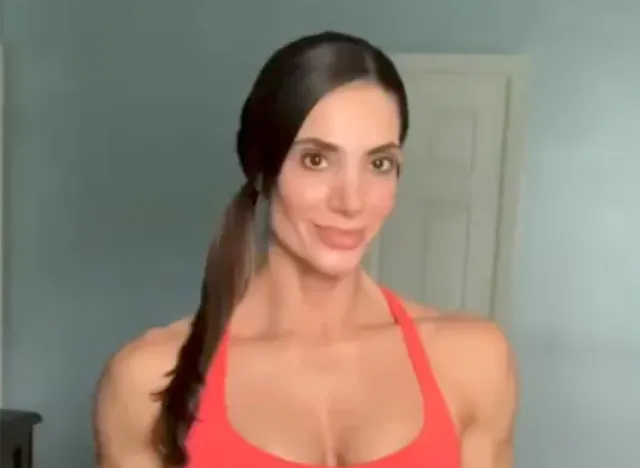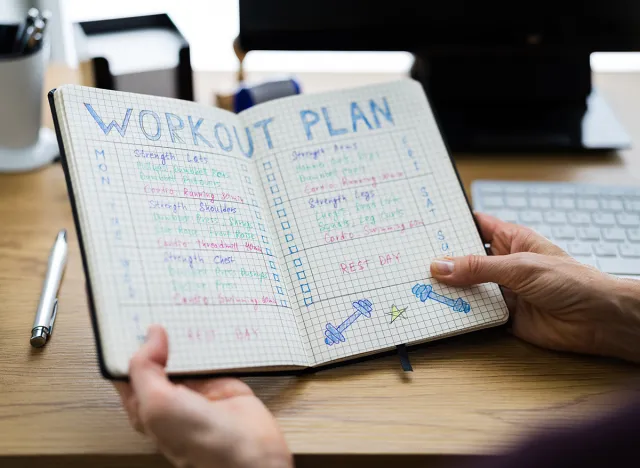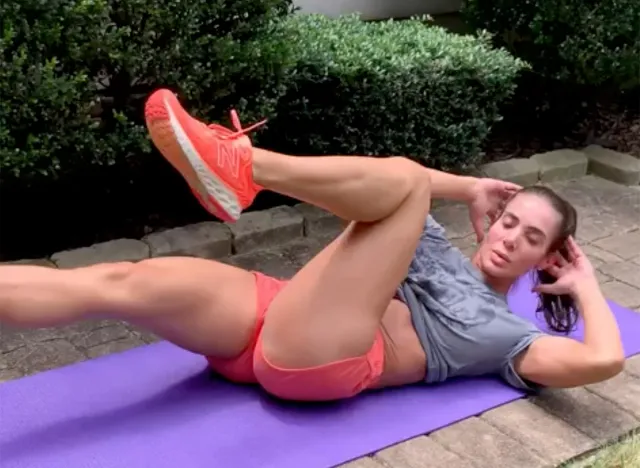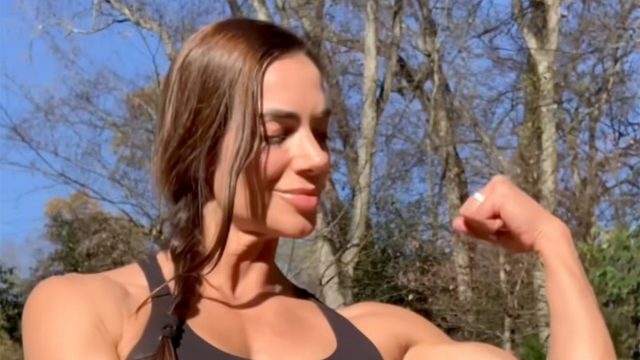The Best Full-Body Home Workout For Small Spaces
No gym, no problem. You can get an effective, full-body workout in the comfort of your own home or backyard. Sandy Sklar is a Fitness Trainer and influencer with over one million followers on Instagram. Her mission is to help people get fit using minimal equipment. In a recent post she shares a short but effective at-home workout that requires little equipment and very little space. "FULL BODY work," she writes in the caption of the Instagram clip. "All you need is a set of dumbbells, a small space and a body ready to work, for this fiery set 🔥Perfect for home or gym." Here is her workout – and everything else you need to know about her lifestyle habits.
Here Is the Workout

"Perform all 4 exercises in a circuit with minimal rest between. Aim for 3-5 sets. Adjust reps and weight as needed to accommodate your fitness level," Sandy writes before revealing the workout set.
- Blast off push-up x 10
- Renegade row x 20 total
- RDL, clean to front squat x 15
- Alternating split squat jumps (weight optional) x 20 total
She Has a Work Out Buddy

Sandy has a workout buddy with her husband – sort of. "Actually, Paul and I, we kind of just do our own thing," Sandy told Muscle & Fitness. "Sometimes we'll kind of work out together, and if our little ones start to run around and do their own thing, we'll basically assist whoever needs help watching them. They like to use some of the resistance bands and some of our equipment. So we'll show him some stuff — or they may even want to show us an exercise or two [laughs]."
RELATED: 5 Best Exercises for "Bra Bulge" After 50
Weekends Off

Sandy works out Monday through Friday. "Because we're so busy during the work week, it's really hard to make time," Sandy told Muscle & Fitness. "So our weekends, we take off. That's our time together and we make sure we make the time."
Planning Ahead

"Planning ahead is key to my success. Breakfast is always a must for me. Since I'm at home early in the morning (I'm up at 4 a.m. and get to work by 5 or 5:30 a.m.), I make it a priority to make sure I cook whole foods. I start every day with two shots of espresso and steamed 2 percent milk, one cup of organic egg whites with frozen organic spinach, one or two pieces of Spelt toast, and a cup of fresh seasonal organic mixed berries. I make sure that I take 30 grams of grass-fed whey protein with me—I mix it with about 16 ounces of water—that I consume two to three hours after breakfast," Sandy told Glamour.
RELATED: 5 Little-Known Tips for Burning Belly Fat
Easing Into Fitness

Sandy recommends starting slow when getting into exercise. "If you are a beginner or lack the motivation to exercise, just try to find an activity you enjoy," Sklar told Women's Health. "Walking, swimming, or participating in a recreational sport is a great place to start. Any physical activity or movement is better than none."
💪🔥Body Booster: If you only have 15 minutes to work out, carefully choose a few exercises and aim to do 3 to five sets of them.





